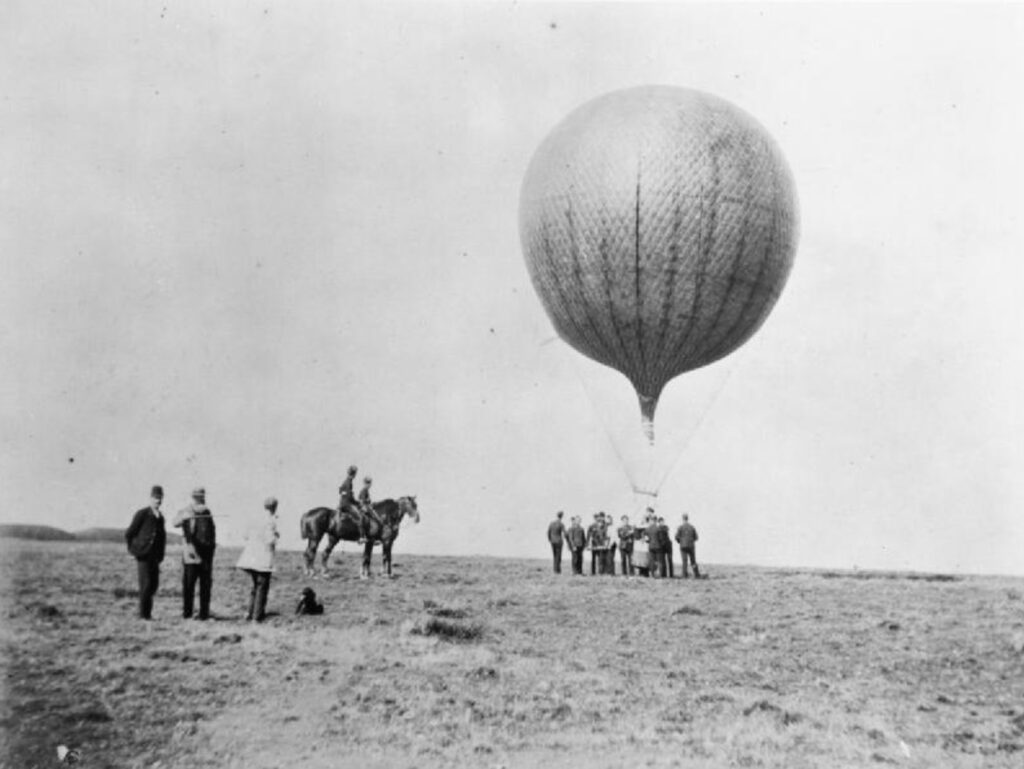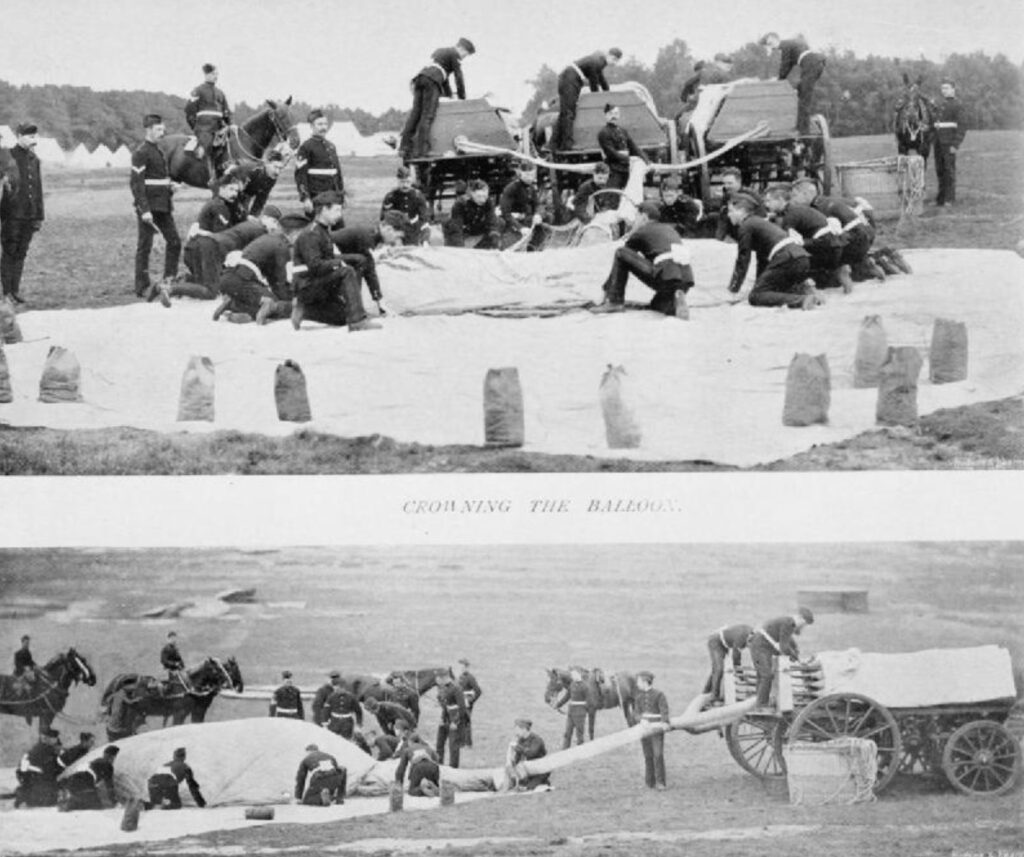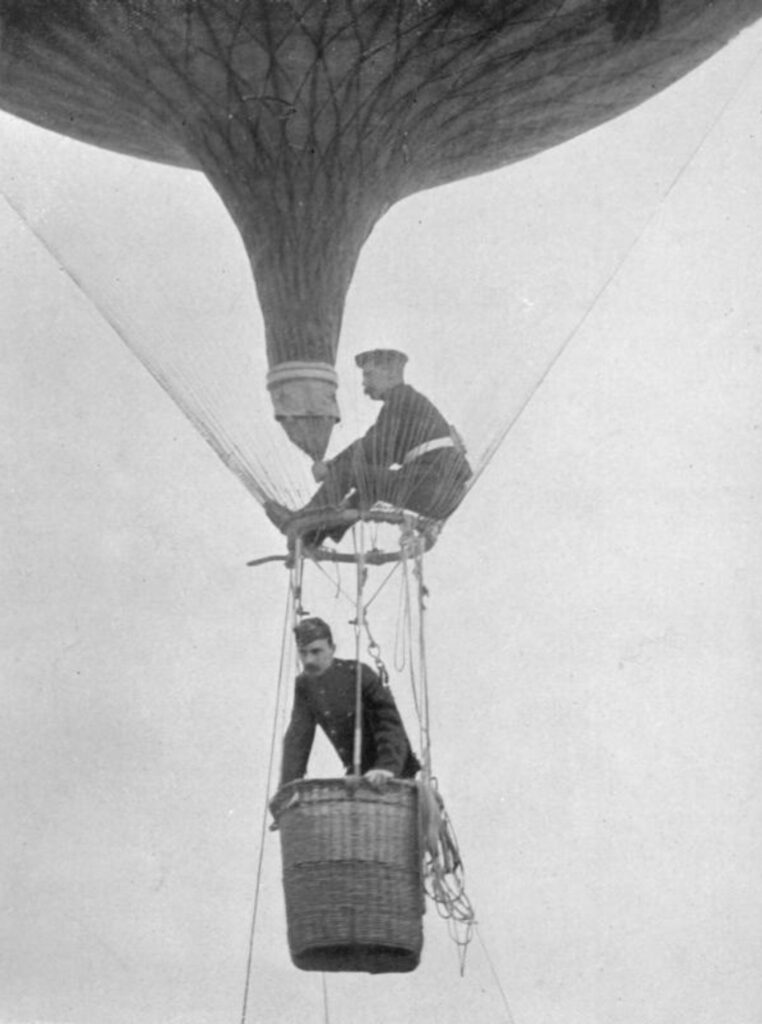By the 1870s, military strategists around the world were beginning to take the aerial perspective seriously. Balloons had already proven their value in France, the United States, and South America, offering military leaders a revolutionary advantage: the ability to see the battlefield from above. In Part III of our series, we cross the Atlantic to Britain, where the efforts of two forward-thinking officers of the Royal Engineers — Captain Frederick Edward Beaumont and Lieutenant George Edward Grover — laid the groundwork for what would eventually become a formal balloon corps within the British Army. Though they were not the first to dream of using balloons in warfare, they were instrumental in translating the vision into viable military practice.
F. E. Beaumont was no ordinary officer. Trained in the Royal Engineers, he combined a technical mind with a soldier’s practicality. A seasoned veteran of the Crimean War, he had also served in India and was keenly interested in how science and technology could reshape warfare. His contributions would ultimately bridge the gap between the earliest balloon experiments in France and the more systematic approaches that emerged by the late 19th century.
Beaumont’s interest in balloons as military tools began during his time as one of the British observers of the American Civil War. There, he witnessed the use of tethered balloons by Union forces under Thaddeus Lowe. These field demonstrations left a lasting impression: balloon reconnaissance had the potential to transform battlefield awareness. But when Beaumont returned to Britain, he found the military establishment indifferent, if not outright skeptical.
Campaign for Change
“It is difficult to over-estimate the advantage which the power of overlooking the enemy’s position affords to the general of an army.”
-Capitain F. E. Beaumont
Upon his return, Beaumont partnered with Lieutenant G. E. Grover, another Royal Engineer with a keen interest in aeronautics. Grover, like Beaumont, was trained at the Royal Military Academy and had a strong background in engineering. Though not as battle-tested, Grover’s technical acumen and enthusiasm for scientific progress made him a valuable collaborator in championing military innovation.
Together, Beaumont and Grover began lobbying the War Office in 1862 to consider the military application of balloons. Their advocacy was not merely theoretical. They drew upon Beaumont’s Civil War observations and Grover’s technical understanding to argue that tethered balloons could serve as elevated platforms for surveillance, communication, and even artillery spotting.
Their campaign met resistance. The British military establishment, steeped in traditional doctrines and unconvinced by foreign experiments, viewed the balloon with skepticism. Still, Beaumont and Grover persisted, producing reports, offering demonstrations, and urging their superiors to give the concept a fair trial.
The First Demonstrations
In 1863, the War Office agreed to fund experimental ascents. The renowned aeronaut Henry Tracey Coxwell—who, years later, would also make notable contributions to the emerging field of aerial photography—was enlisted to supply and pilot the balloons. Trials were conducted at Aldershot Camp and later at Woolwich Arsenal. These tests marked the first real engagement of the British Army with military ballooning.

At Aldershot, Coxwell’s balloon was inflated with coal gas and used to conduct captive ascents, during which observers (including Beaumont and Grover) were able to locate distant troop movements from aloft. The balloon was later released, carrying the observers on a free-flight journey that ended miles from the launch site. Similar trials at Woolwich demonstrated not only reconnaissance potential but the ability to signal and direct ground units from the air. Senior officers in attendance were impressed, and the trials proved that tethered balloons were operationally viable under controlled conditions.
The Struggle to Launch British Ballooning
Despite the success of these demonstrations, the War Office declined to establish a balloon corps immediately. Budget constraints and peacetime complacency meant the idea was shelved temporarily. But Beaumont and Grover continued their work, helping to form the Balloon Committee in 1871. This committee, which included scientific and military experts, addressed practical concerns such as field inflation of balloons, eventually leading to portable hydrogen gas generation methods developed with the help of chemist Sir Frederick Abel.

A Corps Takes Shape
The efforts of Beaumont and Grover in the 1860s and early 1870s finally bore fruit with the formation of a permanent balloon section in the Royal Engineers in 1878. Captain J.L.B. Templer, building on the foundation established by Beaumont and Grover, led the development of the Army’s first operational balloon, “Pioneer.”From there, the School of Ballooning was established in 1880, formalizing training and doctrine. Balloons were deployed in active service by the mid-1880s, most notably in the Bechuanaland Expedition and the Sudan campaign. The phrase “the balloon’s going up” entered the military vernacular, a lasting linguistic legacy of the British Army’s new aerial capabilities.

The rise of British military ballooning was not inevitable. It was achieved through the steady influence and determined efforts of early advocates like Beaumont and Grover. By observing foreign innovations, lobbying military institutions, and proving the concept through field trials, they formed the foundation for what would become a permanent aerial reconnaissance capability within the British military. The subsequent success of ballooning units in the late 19th century stands as a testament to the power of persistence and the slow burn of military innovation.

A View that Changed Everything
The legacy of Beaumont and Grover’s work lies in their understanding that the aerial perspective wasn’t a gimmick—it was a game-changer. His insistence on integrating observation balloons into military doctrine foreshadowed the dramatic role aerial reconnaissance would play in 20th-century warfare. His career reminds us that some of the most influential advances in military history come not from battlefield glory, but from relentless behind-the-scenes innovation.
In the next installment of Balloons of War, we’ll follow the story of military ballooning as it takes flight over the deserts and savannahs of Africa. During the British Empire’s campaigns in the Sudan and South Africa, balloons once again proved their advantages—this time under fire, in the harshest environments on Earth.
